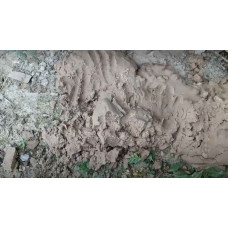A layer of rock or soil saturated with water that has seeped in after rainfall or come from rivers or lakes. The layers are partly made up of loose materials: gravel, dolomite, silt, limestone, marl or sand. Cracks or cavities between the layers are filled with groundwater. The horizon is bounded either by two impermeable layers (usually clay) or by one impermeable layer and an aeration zone.
Main characteristics:
Static or piezometric level in a well drilled into a given aquifer. Measured in metres from the surface.
A dynamic level that occurs when water is sampled from a well, for example using a submersible pump. Measured in metres from the surface.
The flow of water from the aquifer or well is measured in l/s, m3/h, m3/day, thousand m3/year.
The coefficient of water capacity is measured in m3/day;
The rate of working out of the static level is measured in metres per year, it shows the rate of water level drop at a given water intake;
The annual amplitude of water level fluctuation is measured in metres.
The depth of the base of the aquifer layer. Measured in metres from the surface.
The depth of the top of the aquifer. Measured in metres from the surface.
An unconfined aquifer (unconfined, free, phreatic or water-table aquifer) is an aquifer whose upper boundary is a depression (free) surface where the hydrostatic pressure is equal to atmospheric pressure.
An artesian (pressure) aquifer is a horizon located in deeper underground layers.
The confining layer is a horizon that is practically impermeable to water. A well-compacted soil is a water barrier (self-compacting soils with a high content of fine particles).
Geological materials can be classified as cemented rocks or unconsolidated (loose) deposits. Cemented rocks can be formed by sandstone, shale clay, granite and basalt. Unconsolidated rocks contain granular materials: sand, pebbles, silt and clay. The four main types of aquifer are:
alluvium (sand, pebbles and silt deposited by rivers),
sedimentary rock formation (compacted sediments),
glacial sediments (unconsolidated sediments created by glaciers),
volcanic metamorphic rocks.
Aquifers can be found at different depths. Those closer to the surface are not only more frequently used as a source of water for drinking and irrigation, but are also more frequently recharged by rainfall. Many desert regions have limestone hills or mountains that may contain groundwater. Surface aquifers from which water is extracted are found in parts of the Atlas Mountains in North Africa, the Lebanon and Anti-Lebanon Ranges in Syria, Israel and Lebanon, parts of the Sierra Nevada and other mountains in the southwestern United States. Excessive use can cause the water table to drop. Along the coasts of some countries, such as Libya and Israel, population growth and increased water consumption have led to a decline in groundwater levels and subsequent contamination by salty seawater.
Aquifer
Tags: Aquifer

